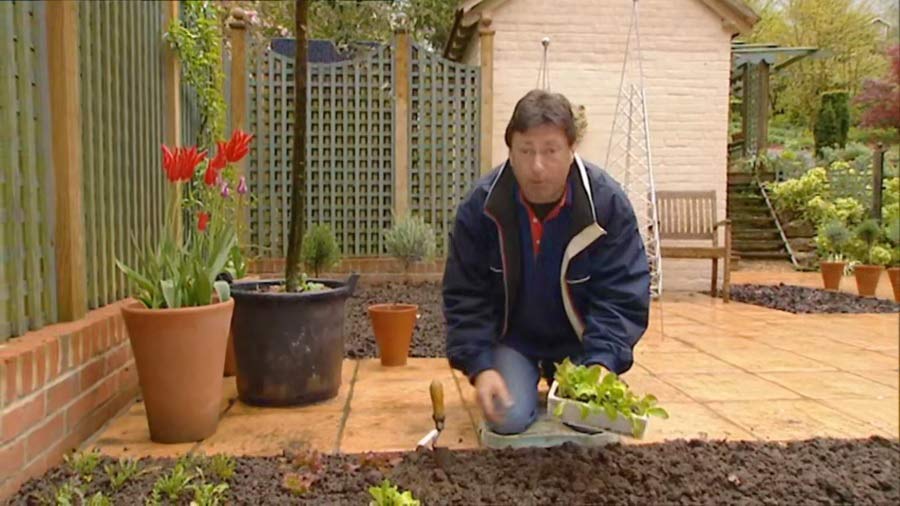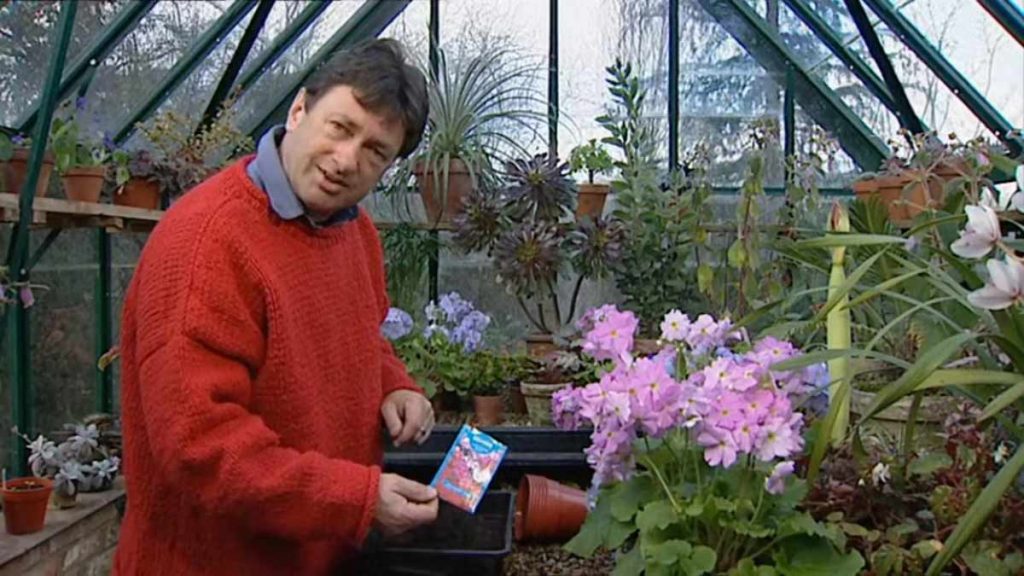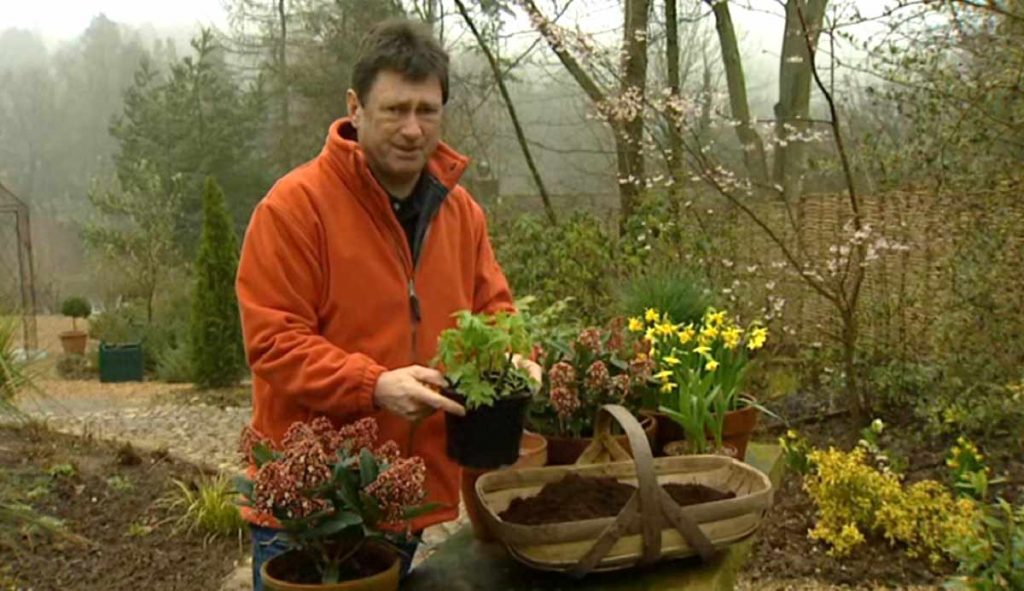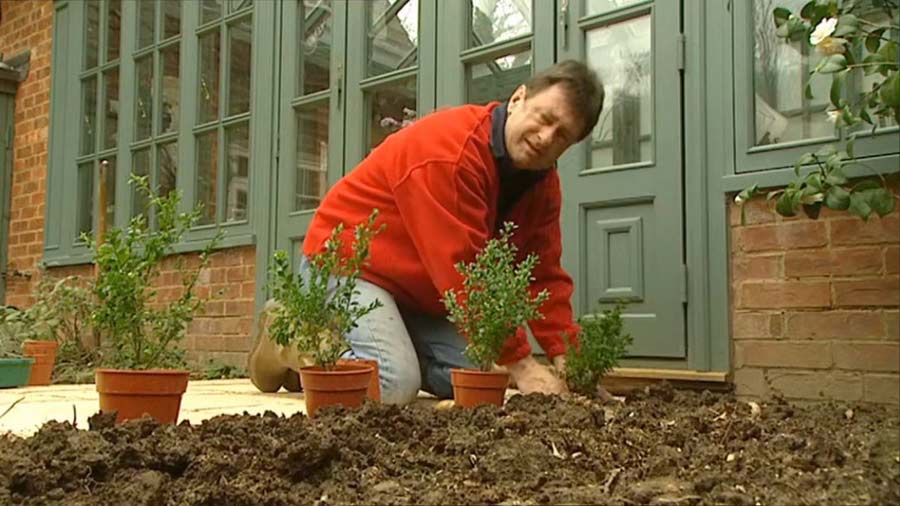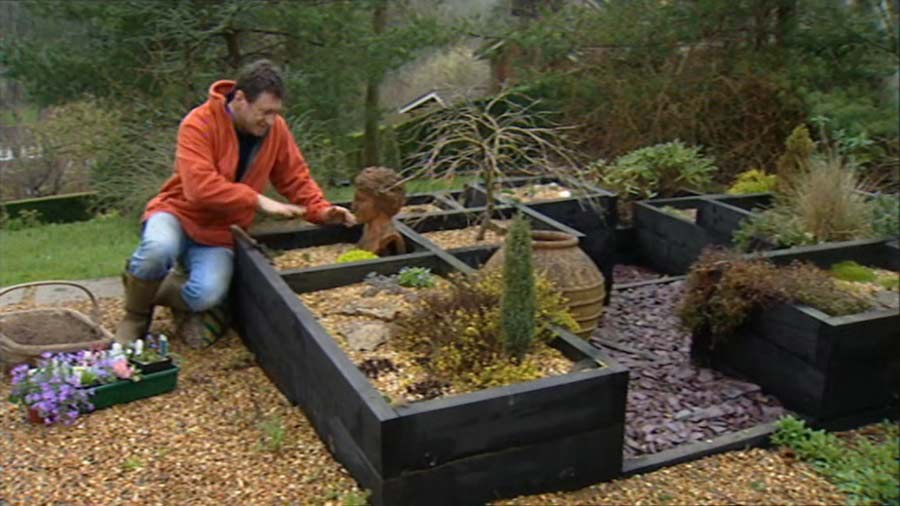Gardeners World episode 10 2002: Alan Titchmarsh is in the kitchen garden planting lettuces, swiss chard, french bean and sweat peas.
Gardening show packed with good ideas, tips, advice from experts and timely reminders to get the most out of your garden, whatever its size or type.
Gardeners World episode 10 2002
How to grow lettuce
Choose the right varieties and you can have lettuce almost all year round. There are so many types of lettuce to choose from – all with different colours, flavours and textures – that salad need never be boring! There are two main types of lettuce – hearting lettuces have a dense centre, while loose-leaf lettuces have open leaves and no heart. You can also grow a variety of salad leaves that can be picked while young and tender.
Grow lettuces in full sun on moisture-retentive soil. Early and late sowings may need protection against cold, using cloches, plastic tunnels or horticultural fleece. All these types of protection will be available at garden centres.
Thin seedlings as soon as the first true leaves appear and continue until the plants are 30cm (12in) apart. The seedlings you thin out can be washed and eaten too. Water when the soil is dry; the best time to water is in the early morning. Early in the year sparrows can be a problem as they find young lettuce plants irresistible. Protect with fleece, chicken wire or similar.
Lettuce is ready to cut when a firm heart has formed, or the for loose-leaf varieties when leaves are big enough to be worth eating. Harvest lettuces by cutting rather than pulling.
How to Grow Swiss Chard
A delicious alternative to spinach, Swiss chard is easy to grow and relatively low maintenance. With its ornamental leaves and stems, it looks just as good in containers and borders as the vegetable plot. Packed with vitamins, the leaves make a colourful addition to stir fries and soups and very young, tender leaves are great in salads. The stalks can be cooked separately and are equally tasty.
Make a shallow drill in well-prepared soil in a sunny spot and sow your Swiss chard seeds thinly, approximately 1.5cm deep. Cover seeds with soil and water well. Sow in rows 40cm apart. You can sow chard from March to September.
How to grow French beans
French beans are delicious and easy to grow. They make great finger food for children, and are ideal for anyone who doesn’t like the ‘stringy’ bits in runner beans! They come in a variety of colours – as well as the usual green beans, there are cream, yellow, and purple French beans.
French beans need a warm, sunny spot in well-drained soil. They are a tender crop that doesn’t like frost or cold temperatures. Fork in some well-rotted manure before you sow your beans. Climbing French beans will crop continually into September, but dwarf French bean plants crop only over a few weeks, so you may want to make an additional later sowing.
For an early crop you can sow indoors in late April to early May. Use small pots, sowing one bean per pot 5cm (2in) deep. After hardening off (acclimatising) the young plants you can plant them outside at the end of May/begining of June after risk of frost has passed.
How to grow lathyrus
Discover how easy Lathyrus are to grow. Whether raising sweetly-scented annual sweet peas or cultivating perennial peas, this page will help you get started. When choosing between sweet peas and perennial Lathyrus, the main decision is whether or not scent is important to you. Then work out whether you’d prefer an annual or perennial. There are plenty of colour options too, as well as both climbing and more bushy types.
Most sweet peas (Lathyrus odoratus) are highly scented, so choose these if you love a fragrant garden and sweet-smelling blooms to pick for indoors.
